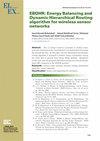High-accuracy Low-latency Non-Maximum Suppression Processor for Traffic Object Detection
IF 0.8
4区 工程技术
Q4 ENGINEERING, ELECTRICAL & ELECTRONIC
引用次数: 0
Abstract
As autonomous driving technology advances, the requirements for object detection are becoming increasingly high. Non-maximum suppression (NMS) algorithm, as a key component in traffic object detection algorithms, is an independent post-processing process in the object detection framework. Due to the complexity of real-world road scenarios and high density of detected entities in urban traffic, the number of candidate bounding boxes generated by the neural network is large. Hence, low-precision processors may generate a significant number of redundant target bounding boxes. The excessive output of redundant target bounding boxes not only imposes a workload on subsequent processing but also has the potential to result in non-optimal decision-making. We propose a high-performance NMS processor that can quickly process a large number of candidate boxes without performing sorting of their scores. Also, it has low precision loss computing units and high parallel computing arrays. Combined with algorithm design, it effectively reduces the computational complexity and reduces the inference time of the end-to-end task of the NMS algorithm. Thus, our NMS processor’s speed is comparable to SOTA architecture, and the average accuracy loss is only 0.4% .用于流量目标检测的高精度低延迟非最大抑制处理器
随着自动驾驶技术的进步,对目标检测的要求越来越高。非最大抑制(NMS)算法是目标检测框架中一个独立的后处理过程,是流量目标检测算法的关键组成部分。由于现实世界道路场景的复杂性和城市交通中检测实体的高密度,神经网络生成的候选边界框数量很大。因此,低精度处理器可能会产生大量冗余目标边界框。冗余目标边界框的过量输出不仅给后续处理增加了工作量,而且有可能导致非最优决策。我们提出了一种高性能NMS处理器,它可以快速处理大量候选框,而无需对其分数进行排序。此外,它还具有低精度损耗计算单元和高并行计算阵列。结合算法设计,有效降低了NMS算法端到端任务的计算复杂度,缩短了推理时间。因此,我们的NMS处理器的速度与SOTA架构相当,平均精度损失仅为0.4%。
本文章由计算机程序翻译,如有差异,请以英文原文为准。
求助全文
约1分钟内获得全文
求助全文
来源期刊

Ieice Electronics Express
工程技术-工程:电子与电气
CiteScore
1.50
自引率
37.50%
发文量
119
审稿时长
1.1 months
期刊介绍:
An aim of ELEX is rapid publication of original, peer-reviewed short papers that treat the field of modern electronics and electrical engineering. The boundaries of acceptable fields are not strictly delimited and they are flexibly varied to reflect trends of the fields. The scope of ELEX has mainly been focused on device and circuit technologies. Current appropriate topics include:
- Integrated optoelectronics (lasers and optoelectronic devices, silicon photonics, planar lightwave circuits, polymer optical circuits, etc.)
- Optical hardware (fiber optics, microwave photonics, optical interconnects, photonic signal processing, photonic integration and modules, optical sensing, etc.)
- Electromagnetic theory
- Microwave and millimeter-wave devices, circuits, and modules
- THz devices, circuits and modules
- Electron devices, circuits and modules (silicon, compound semiconductor, organic and novel materials)
- Integrated circuits (memory, logic, analog, RF, sensor)
- Power devices and circuits
- Micro- or nano-electromechanical systems
- Circuits and modules for storage
- Superconducting electronics
- Energy harvesting devices, circuits and modules
- Circuits and modules for electronic displays
- Circuits and modules for electronic instrumentation
- Devices, circuits and modules for IoT and biomedical applications
 求助内容:
求助内容: 应助结果提醒方式:
应助结果提醒方式:


